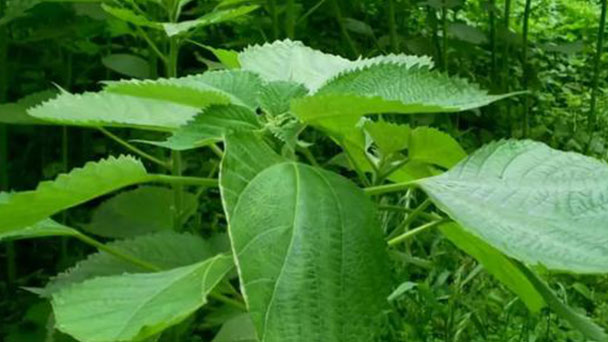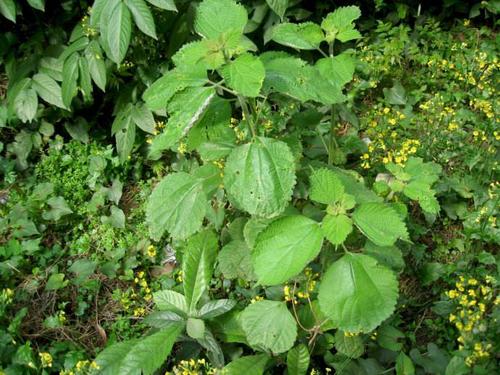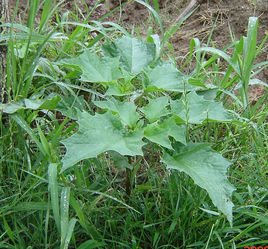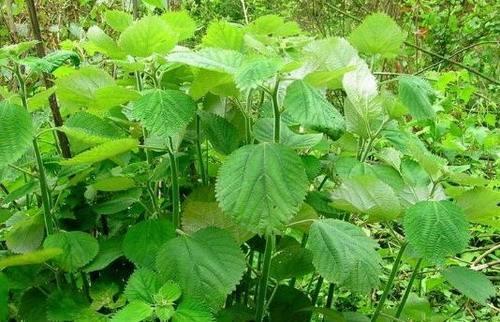How to grow Ramie
Written by Maggie
Jan 11 2021

Ramie is a versatile plant. In addition to being edible, it is also an important textile crop, a source of high-quality paper, silkworm for its young leaves, fodder for its seeds, oil for its soap. Ramie has also been quite effective in conserving water and soil. As the market has grown in recent years, so has the number of people who grow Ramie. So how to grow Ramie? Today, let's take a look at how to grow Ramie.

1. Choose the land and build the garden for growing Ramie
Ramie is a plant with short sunshine and warmth, which is suitable for planting in temperate and subtropical climates. Therefore, it is best to choose an area with leeward to the sun and good drainage. However, the intensity of light should not be too strong, and the low water level below 1 meter is not suitable for planting.It can adapt sandy soil to clay soil, but the best growth is in loose soil.
2. Sow and cultivate seedlings of Ramie
Ramie has a variety of breeding methods, most commonly root-borne, but the old perennials were the precondition, and the seeding method was still used when planting. Sowing time from early March to early April, select market conditions as seedbed, apply sufficient base fertilizer, rake fine leveling can be carried out sowing. Generally, the germination rate of sowing is 30%, and the sowing quantity of each acre is about 0.5kg. When sowing, the seed is mixed with fine mud or grass and wood ash for sowing. Before sowing, water is poured through water, and after sowing, a layer of fine soil and grass and wood ash is covered with a layer of straw and crop straw, so as to keep warm and keep wet. After sowing, the soil should be kept moist. After seedling emergence, the mulch should be removed slowly as the seedlings grow, and all the mulch should be removed when the seedlings grow to 6 real leaves.
3. Thinning and weeding
The timely thinning of seedlings during the seedling stage can make the seedlings grow quickly and increase the yield. Usually, one thinning is carried out during the period of 4 leaves, and the second thinning is carried out for 6 leaves. The plant spacing is 4-5cm, and 400-500 plants can be planted per square meter. At the same time of thinning out seedlings, the diseased plants and weak seedlings can be removed, weeds can be removed, and diseases and insect pests can be controlled by spraying. During this period, there are 1-2 times of intertillage, and the soil can be loosened in time. Once in the germination stage, shallow tillage assists to sprout, so that the buds are orderly.

4. Fertilizer and water management for growing Ramie
After the mulch is removed, water the soil frequently to keep it moist. At the 3-4 leaf stage, appropriate fertilization can be combined with watering. At this time, an appropriate amount of urine fertilizer can be applied, once a week, 2-3 times. When seedlings are 20 cm, then apply seedling fertilizer, promote seedling growth. When 60 cm value a long stalk fertilizer, fertilizer general with human and animal manure, cake fertilizer and urea is given priority to, general farmyard manure to exert human and animal faeces and urine per acre 20 kg, 1000 kg, 100 kg cake fertilizer, urea. In the growing season, we can apply a small amount of boron fertilizer and increase the production.
5. Harvest Ramie
Ramie is a crop harvested many times. The first harvest is in late May or early June, and the first harvest should be early, so as to promote the early development of the second hemp. The above work should be repeated after harvest. In the same way as weeding seedlings and fertilizer and water management, the second hemp is generally cultivated, weeded and fertilizing in late July after harvest, and the prevention and control of diseases and insect pests should also be paid attention to, so as to promote the healthy growth of the third hemp. Sanma growing season in late summer and early autumn, disease is more serious, the climate change is greater, in addition to pests, but also drought and autumn drought and flood control measures, sanma generally in late October or early November can be harvested.
The above are the planting points of Ramie. Ramie is a plant with short sunshine, so it has certain requirements on the planting site. At ordinary times, we should strengthen field management, do well the work of weeding through tillage, ensure sufficient water and fertilizer, and pay attention to the prevention and control of diseases and insect pests.

Latest Updated
- Benefits of Bugleweed - 7 Science-backed Health Benefits
- Bugleweed Dangers & Side Effects - Is It Poisonous?
- How to Plant Evergreen Trees - What You Should Know
- When to Plant Evergreens - Grow Guide for Evergreen Trees
- 12 Wonderful Evergreen Shrubs for Your Garden
- 12 Popular Evergreen Plants with Pictures for Beginners
- When And How To Prune A Lilac Bush Like a Pro
- How to Grow & Care for Lilac Vine (Hardenbergia Violacea)
- Japanese Lilac Tree (Syringa Reticulata) Care & Propagation Guide
- Shumard Oak Pros and Cons - What to Know
Popular Articles
- Winter maintenance of Antirrhinum Majus
- How to Grow Terminalia Mantaly Tree
- How to Grow and Care for Crossostephium Chinense
- How to grow Antirrhinum Majus in spring
- Peristeria Elata (Dove Orchid) Profile: Info & Care Guide
- Underwatered Snake Plant (Sansevieria Trifasciata) - Signs And How To Fix
- How to Care for Brazilian Jasmine Plant (Mandevilla Sanderi)
- How to Grow & Care for Graptopetalum Purple Delight in Summer
- Rosa Chinensis (China Rose): Plant Growing & Care Tips
- How to Care for Baby Sun Rose (Aptenia Cordifolia)